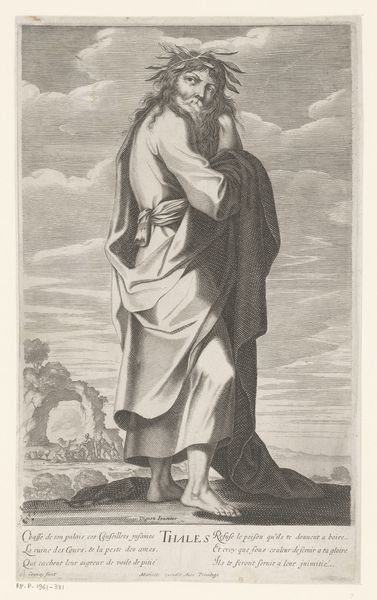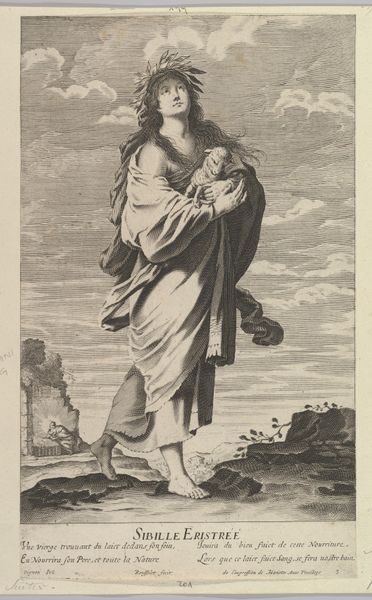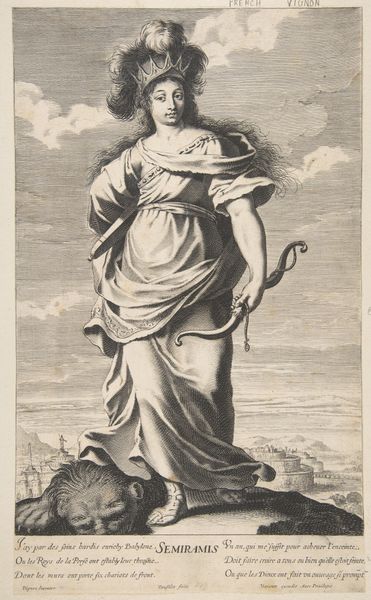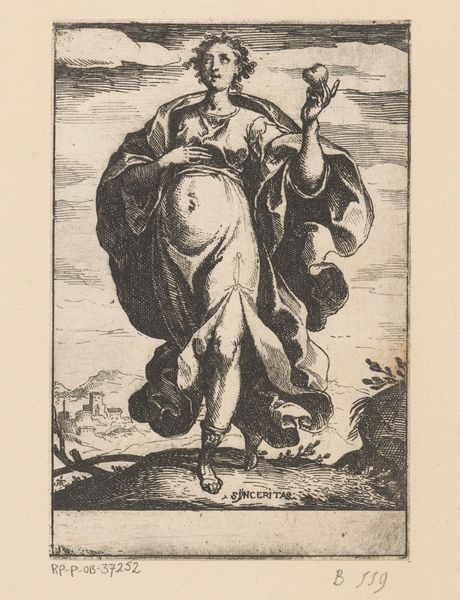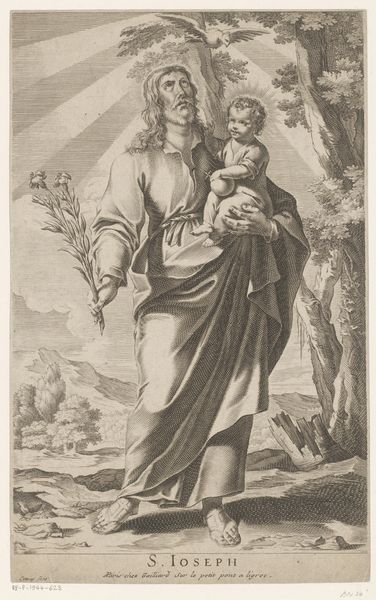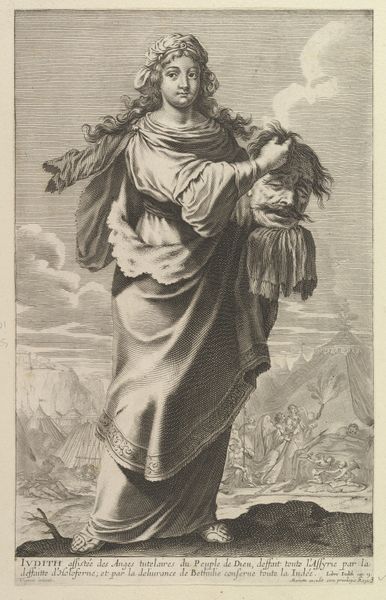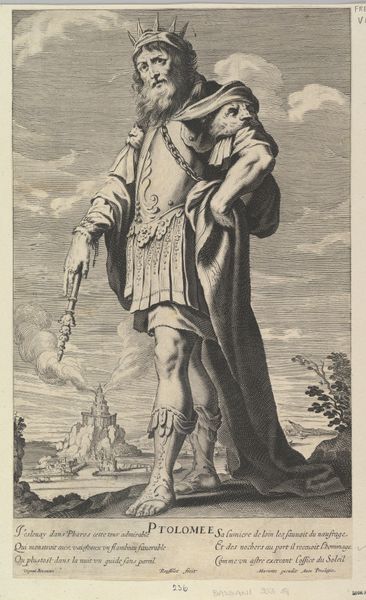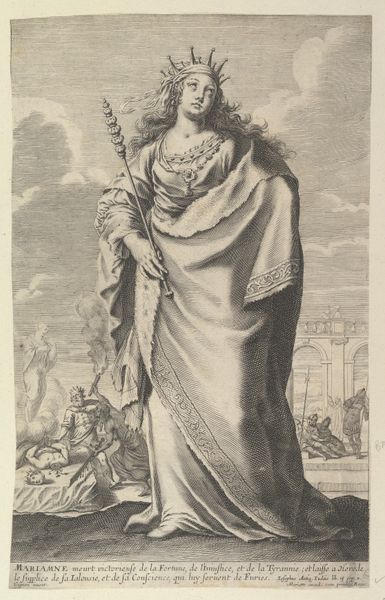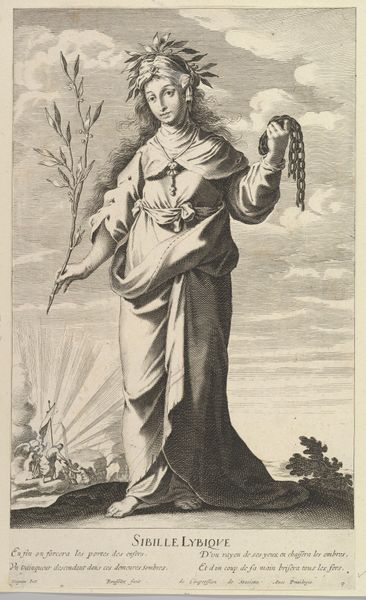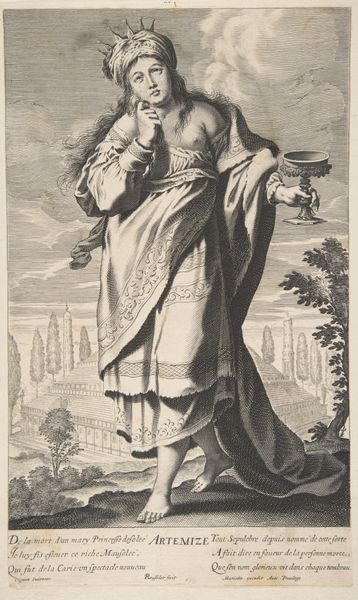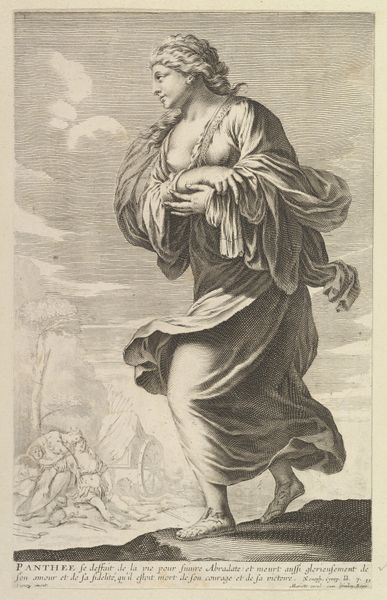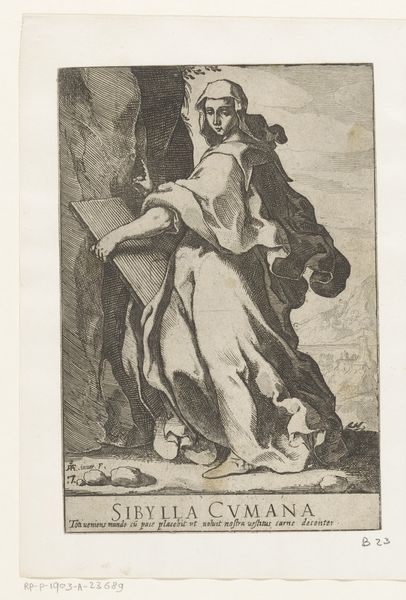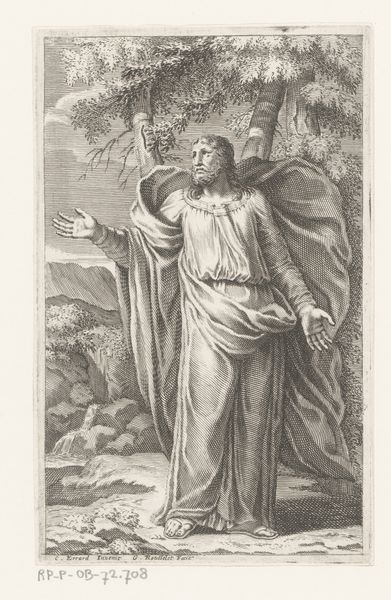
drawing, print, engraving
#
portrait
#
drawing
#
baroque
# print
#
figuration
#
history-painting
#
engraving
Dimensions: sheet: 14 1/16 x 8 3/8 in. (35.7 x 21.3 cm)
Copyright: Public Domain
Curator: Let's discuss this striking engraving, "Sibylle Persique," created by Gilles Rousselet around 1630-1640. It's currently held at the Metropolitan Museum of Art. Editor: My first impression? There’s something profoundly unsettling about the calm, almost detached gaze of this Sibyl. Her face is at odds with the wild setting—the chaotic sky, that serpent coiled around the tree stump, and then there’s what seems to be the virgin Mary, a very unorthodox element. It gives me an uneasy feeling of suppressed power. Curator: Indeed. It's important to consider the context of such works at that time. Prints like this played a crucial role in disseminating knowledge, visual ideas and historical understanding through Europe. Here we see Rousselet taking part in that historical dialogue and reinterpretation through allegory. He may also have had the aim to spread catholic beliefs using historical painting to influence a public that at that moment were undergoing the Protestant reformation. Editor: Exactly, the depiction of the Sibyls—women in the classical world believed to possess prophetic powers—was used to present women as capable. But they were also interpreted by Christian tradition as foretelling the coming of Christ. And here she holds that symbolic role. So is it about empowering woman through prophetic role, or containing female agency within established religious narrative? The ambiguity is what I find so intriguing. The serpent, traditionally a symbol of deception and evil, could be viewed not just as something she would later rule on (like text at the bottom suggests) but as another indication that the scene wants to undermine patriarchal systems with its own instruments, something often found during baroque art, period notorious for re-readings. Curator: The artistry is also noteworthy. The use of engraving allows for an impressive level of detail, especially in the rendering of her garments and facial features. Look at how the lines create volume and texture. It reflects the Baroque fascination with dramatic light and shadow. Editor: The contrast definitely enhances that unsettling atmosphere. She’s illuminated, almost like a beacon, against an unstable backdrop of swirling sky and the disturbing symbolic elements that surround her, making a striking comment about what and who history chooses to enlighten. Is it a celebration, a warning, or perhaps both? Curator: Perhaps the power of art lies in its capacity to keep posing questions, never definitively settling on answers. Editor: Exactly, which means that maybe the true value is how it evolves through the passing of time and socio-economical perspective.
Comments
No comments
Be the first to comment and join the conversation on the ultimate creative platform.
